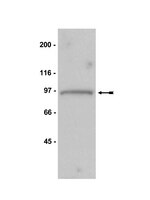Recruitment of Mad1 to metaphase kinetochores is sufficient to reactivate the mitotic checkpoint.
Ballister, ER; Riegman, M; Lampson, MA
The Journal of cell biology
204
901-8
2014
概要を表示する
The mitotic checkpoint monitors kinetochore-microtubule attachment and prevents anaphase until all kinetochores are stably attached. Checkpoint regulation hinges on the dynamic localization of checkpoint proteins to kinetochores. Unattached, checkpoint-active kinetochores accumulate multiple checkpoint proteins, which are depleted from kinetochores upon stable attachment, allowing checkpoint silencing. Because multiple proteins are recruited simultaneously to unattached kinetochores, it is not known what changes at kinetochores are essential for anaphase promoting complex/cyclosome (APC/C) inhibition. Using chemically induced dimerization to manipulate protein localization with temporal control, we show that recruiting the checkpoint protein Mad1 to metaphase kinetochores is sufficient to reactivate the checkpoint without a concomitant increase in kinetochore levels of Mps1 or BubR1. Furthermore, Mad2 binding is necessary but not sufficient for Mad1 to activate the checkpoint; a conserved C-terminal motif is also required. The results of our checkpoint reactivation assay suggest that Mad1, in addition to converting Mad2 to its active conformation, scaffolds formation of a higher-order mitotic checkpoint complex at kinetochores. | 24637323
 |









